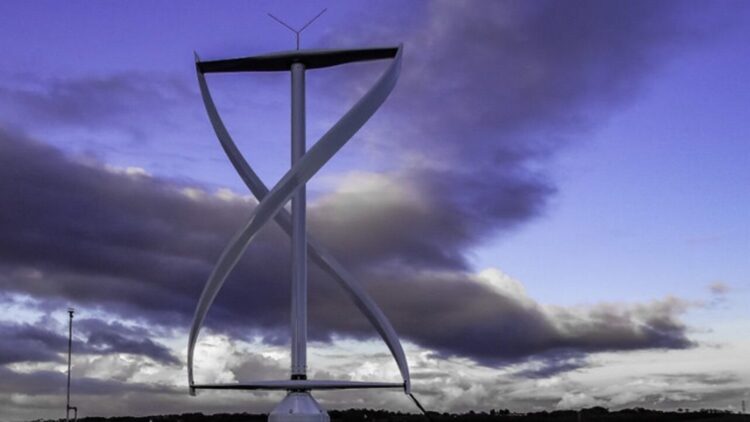When we talk about clean, renewable energy, it is common to think of solar panels before wind power, but while they have dominated the tops of homes and warehouses in recent years, an Australian innovation was being created to change this paradigm. We are talking about vertical-axis wind turbines with a 6kW helical design. And what draws so much attention to them? Unlike the traditional horizontal models found in large wind farms, these turbines were designed for urban spaces, rural areas, small industries, and even existing infrastructure such as railways and highways.
A new way of looking at wind power
The most curious thing about all this is that for a long time, vertical axis turbines (VAWTs) were left aside. Why? Well, they were considered less efficient than their horizontal axis equivalents (HAWTs). But that is changing now, as the new generation of Darrieus turbines, especially the two-bladed helical model, developed by the startup VAWT-X Energy in partnership with Flinders University, overcomes these old limitations such as the high drag caused by turning against the wind and structural instability.
Since the axis of this turbine is vertical, it does not depend as much on the direction of the wind to work, which is already a huge advantage. This makes it perfect for urban areas, farms, ranches, and even small industrial warehouses, where the wind tends to change direction all the time and there is not much space left to install a giant structure. And what’s more: it makes practically no noise. In other words, it works well in places where silence is important.
The helical twist that changes everything
This new turbine changes the way we see wind power. This is because, before, wind turbines were seen as something exclusive to large open fields, but the scenario has changed now. After all, this new generation can be installed close to homes, factories, businesses, and community areas without interfering with daily life (like this solar panel that is directly applied to the windows of houses). The advantage lies in the two-blade helical design, because, in addition to being efficient, it also requires less maintenance, which reduces costs over time.
One of the most interesting aspects of this turbine is that it can be installed in places where traditional turbines simply wouldn’t work. These turbines can be placed near highways, railways, and even on existing structures. Basically, where it was previously unfeasible. And look: in coastal regions, where space is tight and the ground is unstable, they work well on floating platforms. Because they are more stable, they don’t suffer as much from the swaying of the waves. The idea, according to him, is to take this technology even further, with 80kW and even 500kW models, allowing small communities and even entire municipalities to start generating their own clean energy, without depending on large distributors.
It looks like we are living through a decentralized revolution in wind energy
With all this innovation, we can reflect here: only solar panels have popularized the idea of distributed energy production, that is, each home or business generating its own electricity. VAWT-X vertical turbines want to take this revolution further. How so? Well, the proposal is simple: to make wind a decentralized, silent, and constant source to complement the role of panels in many places.
This 6kW model is already enough to supply a good part of the energy demand of a home, a farm, or even a small industry. With the advancement of field tests and the support of the Australian government, perhaps this type of turbine will be able to be sold and installed easily in communities around the world. It seems that we are getting closer to the free and clean energy we have always dreamed of.
Disclaimer: Our coverage of events affecting companies is purely informative and descriptive. Under no circumstances does it seek to promote an opinion or create a trend, nor can it be taken as investment advice or a recommendation of any kind.


